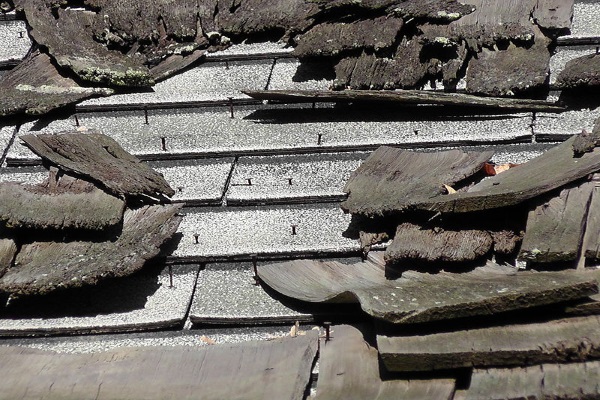True enough, if you knew how to install roof shingles yourself to improve your Allen TX residential roofing, you’d say it was difficult. However, DIY roofing isn’t difficult to understand given the many how to install roof shingles video YouTube can give you.
In this post, you’ll learn how to install 3-tab shingles. Additionally, you can use this knowledge to know how to shingle a gable roof or improve architectural shingles installed wrong by your former contractor.
Truthfully, as long as you follow these 3-tab shingles installation instructions, your DIY projects will definitely work out for the best.
A Comprehensive Guide to DIY Asphalt Shingle Installation
- Tools needed
- Prioritizing your safety
- Understanding your roofing slope (+7 more items)
How to Install Roof Shingles Yourself: The Complete Steps
Before you begin, we advise you to perform all these procedures on a piece of slanted plywood that is about 500 meters wide. In this way, it is easy to gauge whether you can complete your roofing installation or re-roofing.
In many cases, first-time DIY roofers find it difficult to finish projects. As a result, they leave their roofs bare against the elements compromising the protective capacity of their Allen TX home. True enough, learning how to install roof shingles yourself takes practice and is a steep learning curve.
Therefore, by reducing your work capacity, you can measure your skill level whether it needs improvement or you’re ready for the real thing.

Over time, your asphalt shingle roof will deteriorate in quality and require replacement. Here’s the complete instructions to help you through this process.
Tools You’ll Need
Every roofer has a complete list of tools they need to succeed. True enough, these are expensive tools. On the other hand, you cannot completely learn how to install roof shingles yourself without them.
Here is a list of all the tools you’ll need to completely install or re-roof your existing residential Allen TX roof.
- Air hose
- Caulk Gun
- Circular Saw
- Roof Harness
- Extension Ladder
- Meter-length ruler/straight edge
- Tin snips
- Utility knife
- Scaffolding
- Roof nailer
- Work gloves
- Rubber boots
In addition to bundles of asphalt shingles, you’ll need the following materials to cap certain gaps or improve the overall roof construction quality.
- Felt underlayment
- Drip Edge
- Hook blades
- Sealant
- Roofing nails (plenty if you can)
- Self-adhesive waterproof underlayment ice shields
- Staples
- Dormer flashing (if your roof has them)
- Valley flashing
- Vent flashing
Related: Roof Replacement Cost Including Materials and Tools for 2019
Always Prioritize Your Safety
Every roofer and roofing contractor prioritizes employee safety and security. As you are performing DIY roofing, follow this standard operating protocol even if it means purchasing additional equipment to keep you free from injuries.
In other words, don’t skimp on rubber boots, working gloves, using a scaffolding, or buying ladders with extenders. These make sure you and your roof are in top shape during the entire construction process.
A Bit of Roofing Physics Knowledge Always Helps
Before you begin, it pays to know how asphalt shingle roofs work.
Almost every residential property has a high slope. Therefore, the overlapping asphalt shingle patterns use gravity to drive down rainwater or snowmelt from your roof towards your gutters. In this light, you understand why low-slope or flat-roofed properties cannot use asphalt shingles.
Prepare the Deck
This is the easiest part of any roofing task. Deck preparations need you to make sure building contractors securely fastened your plywood to the roof trusses. Next, you’ll need to use plywood to patch any possible gaps. You can nail them in place.
Lastly, sweep and clean the roof to make sure it is free from soot and dust. You’ll be placing your self-adhering roof adhesive next, and it requires a completely clean roof deck to function efficiently.
Do You Always Need Ice Dams?
Ice dams are membranes you can install underneath the main roof underlayment that prevent moisture and extreme weather from affecting the durability of your roof deck.
You only need ice dams if you live in areas with significantly cold winter weather. True enough, Texas residencies qualify for ice dams to improve the lifespan of the property roof deck.
First, you’ll need to unroll and slowly apply the self-adhering membrane to your roof deck. Next, allow it to overhang by a fourth or an inch over your eaves. In doing so, it helps lead in rainwater and snowmelt into the gutter system.
Installing the Roof Underlayment
Roof underlayments come in self-adhering or heat-welded variants. For this DIY project, using the self-adhering variety makes it faster and safer to install than its counterpart.
Just like your ice dam membrane, roof underlayments are self-adhering. During installation, make sure to unroll the adhesive side slowly and use a hand-roller to flatten and remove bubbles underneath the membrane. In addition, each seam must overlap the lower membrane by two inches to prevent leakage.
From Foundation to the Top
Start installing asphalt shingles by starting with a 1/2, 3/4, or 2/4 asphalt shingle on the outermost area of your roof next to the drip edge and gutters. You can use a utility knife to cut them into smaller pieces. In doing so, you guarantee an overlap for the next series of asphalt shingles you install.
Remember to use roofing nails on the joints of each three-tab shingle to secure them in place. In addition, always do checks and use the straight edge to make sure you have aligned the asphalt shingles effectively.
Next, apply the consecutive upper layers until you finish each “field” area between your roof joints and valleys.

Asphalt shingle roof installations are almost similar to slate roof tile installations where you start from the bottom (pictured here) except asphalt shingles have three tabs connected instead of individual shingles.
Covering Joints and Valleys
You can bend partially an asphalt shingle to serve as ridge and valley covers. In doing so, you reduce the likelihood of leaks infiltrating the roof deck during rainstorms.
However, make sure you have installed metal flashing on your roof valleys to help reduce the likelihood of internal roof leak infiltration. You can use roofing sealant or tar to install flashing. Next, nail their corners in place.
If you have chimneys and vents, you can use vent or chimney flashing to prevent internal leaks and create an airtight seal too.
Final Checks
Now that you’re on the final leg on how to install roof shingles yourself, you can use a water hose to see if your entire installation is effectively shedding water straight to your gutters. In addition, it shows you whether the roof has gaps that leak directly into your underlayment or right into the internal ceiling.
Lastly, walk around your roof carefully and check whether there are roof shingle misalignments. Realigning them as soon as possible prevents any possible roofing damage and internal ceiling damages in the future.

Sometimes, the actual DIY roof installation work can get tedious. Therefore, you can always rely on contractors to help you finish the job efficiently.
How to Speed Up Your Asphalt Roof Shingle Construction
True enough, you’ll invest much for the tools you’ll need to install your roof shingles. Additionally, you’ll spend weekends completing your roof installation project. If you needed to claw back time to rest, you won’t have it as long as your roof remains bare, and you have completed this instruction. These factors can definitely make it difficult.
In this light, it pays to work with professionals such as Storm Pros to help you install your roof completely. With our decades of experience, we guarantee only complete and efficient roofing services including repair, replacement, and installation. Contact us today!


Recent Comments